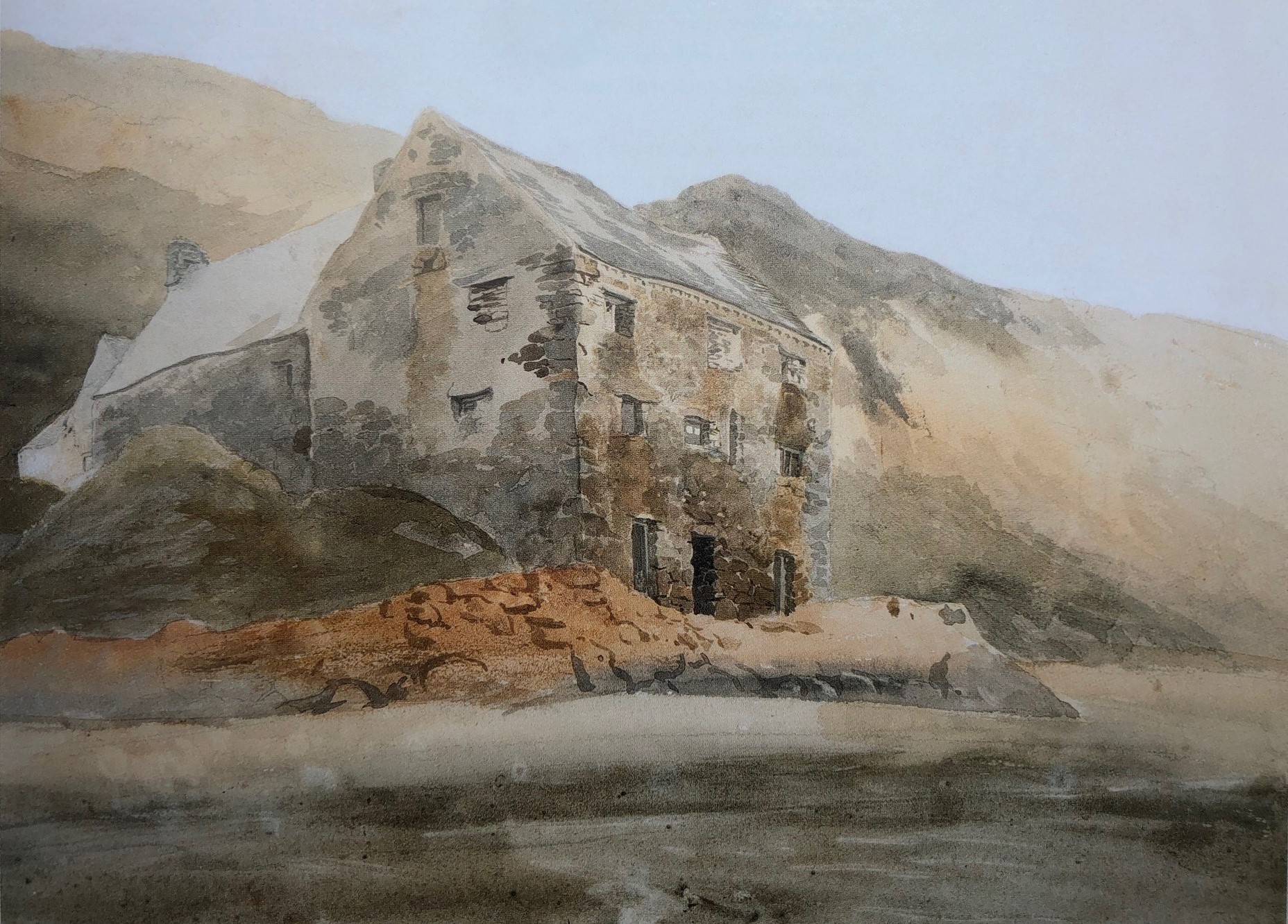I’ve been revisiting the miraculous drawings made by Cornelius Varley when he spent time in Dolgellau in the summer of 1803. The end of the eighteenth and beginning of the nineteenth century was an age of wonder for watercolour painting in Britain, but I think it’s a shame that Varley’s name isn’t celebrated as widely as that of J.M.W. Turner, Thomas Girtin, John Sell Cotman and others. That was how I felt when I wrote a piece in 2020 about the few works I was aware that he painted in Wales in 1802, 1803 and 1805. Now I feel even more strongly that he doesn’t deserve to be overlooked.

Recently I managed to get hold of a copy of an excellent volume entitled Cornelius Varley: the art of observation, published in 2005 by Lowell Libsen, an art dealer and Varley enthusiast. This, and an earlier dealer’s catalogue published in 1973 by Colnaghi, are virtually the only books available about Varley (it’s high time a scholar on the period produced a major work on him). The Libsen catalogue in particular opened my eyes to the range and high quality of his drawing and painting.
Varley came to art from an unusual direction. His father died young, and his uncle Samuel took care of him, giving him work in his optical instrument workshop. Cornelius retained a lifelong interest (he lived to be 92) in optics and invention, interests that outlasted his commitment to art. According to his own account, ‘I commenced drawing & sketching from nature, taught myself & was soon engaged to teach others.’ In fact, he was probably not an autodidact. His brother John was already a painter, and Cornelius seem to have been influenced by Girtin and others.

Varley’s three summers in north Wales were his anni mirabiles. He seems to have found the mountains a source of fascination and inspiration, a place where he could develop his piercing and concentrated powers of observation, experiment with his drawing and colouring techniques, and produce work of astonishing freshness and lightness of being. The pencil drawings, including those of Cader Idris, are, according to the art historian Timothy Wilcox, ‘among the most penetrating and concentrated ever recorded’.
The Libsen catalogue includes many other pencil drawings, new to me, that support that judgement. It also contains several watercolours that stand comparison with the contemporary works of John Sell Cotman.

Though Cader Idris was the main focus of Cornelius’s work on the 1802 visit, he also paid close attention to the ordinary vernacular architecture of Dolgellau. ‘A house in Dolgelly’ is typical of the modest subjects he favoured, and of the way he was content to sketch in a section of the house, in a few washes of varying shades and pencil marks, while leaving other parts incomplete (and the next-door house barely outlined).

From Dolgellau Varley moved north, and the undated watercolour ‘A view in Snowdonia’ may belong to the 1802 trip. But it could equally come from his 1803 tour, when one of his bases was Llanllyfni, in the Nantlle valley. This is a very different scene, a fully worked-up scene of mountains rising from a flat expanse, possibly Traeth Glaslyn, with carefully modulated horizontal washes. The highlights on the plain, that add so much to the liveliness of the picture, are achieved by leaving ‘crumbs’ of the underlying paper bare. As so often with Varley’s mountain scenes, light and the play of light are his central concern, with topographical detail suppressed.

‘A stone-built farmhouse’, also undated, has a lot in common with the remarkable ‘Cottage at Llanllyfni’, and so probably dates to 1803. There are three layers of presence in the picture. Varley lavishes most detail on the stone wall to the left: he picks out individual stones in ink and uses a green wash to spotlight them. The other buildings receding down the street, along with the large rock in the foreground, he articulates rather more sketchily. Finally, hardly noticeable in the left foreground, are the reserved figures of two women. As with ‘Cottage at Llanllyfni’, Cornelius sees no need to add more to what is a near-perfect composition.

On the surface, ‘A pump house, Wales’ seems to take us back to more traditional topographical painting. But Varley isn’t really interested in the particulars or significance of the building, its history or the pathos of its present dereliction. He’s more concerned with how it sits in its mountain setting, and how the planes and their colours interact. Within a narrow range of greys, browns and yellows he creates a miniature symphony of shapes and shades. Again he concentrates his detail in one area, the façade of the building, leaving as blank planes much of the background mountain and sky.
Together, Cornelius Varley’s pictures from his Welsh trips, modest, little seen and sometimes ‘unfinished’, have the same freshness today as they must have had when they were made. They helped to re-make the idea of what painting was for, releasing it from the tyranny of patrons and hoary pictorial conventions, and letting art breath freely in the bright light of day.

Leave a Reply